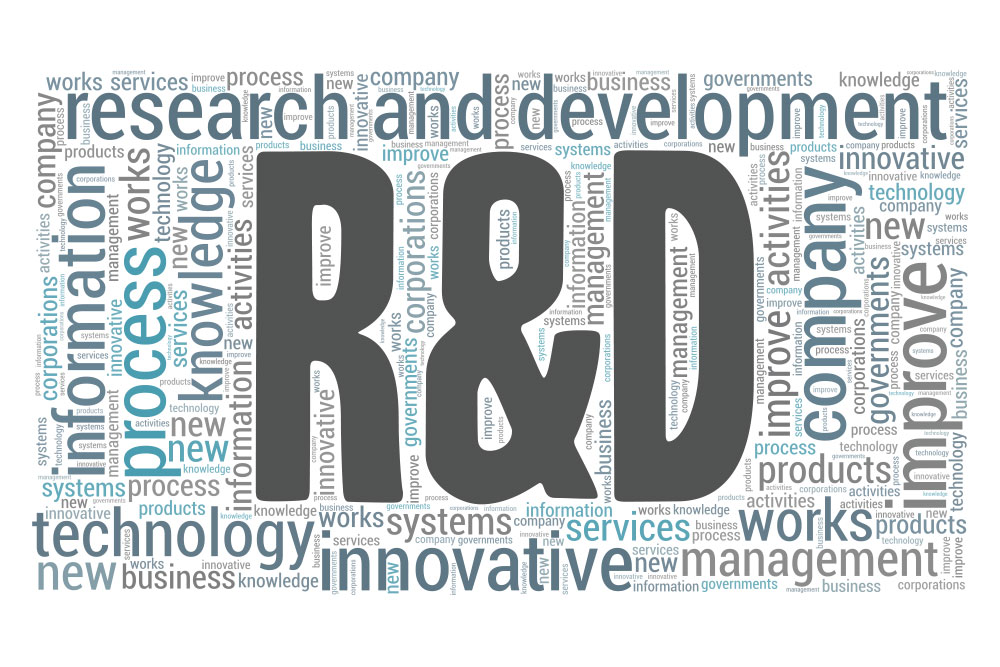
If you’ve searched for something like ‘How to save money for my business during COVID’ and landed here – well, you may be in for a nice surprise. How would you feel if I told you that your company could be sitting on tens of thousands of pounds in extra funds? It’s a very real possibility.
Every year, only around 5-10% of eligible UK companies claim back tax credits earmarked for Research & Development (R&D). That’s money you could be putting towards your projects, or looking after your employees as COVID-19 continues to cause uncertainty.
In short, R&D tax credits are one of the most effective ways to save money for your business during COVID (and moving beyond it). So, the question really isn’t so much “Should I be looking to make a claim?” and instead more “What could I claim for?”
How R&D tax credits can help you save money
Any business can claim back tax on projects that have at least some element of technical innovation.
It’s wide-ranging, and applies to every sector. Whether you operate a care home, a freight business, in biotech, chemicals, food or any other industry you can think of – if you invest money into developing an innovative technical solution, you could be eligible to claim money back from HMRC under R&D Tax Credits.
How much could you claim back?
The maximum amount of salaried costs you could claim on R&D tax credits depends on the industry you’re in, and your business’ turnover. Based on our experience and calculations, using the HMRC three tiers, the approximate maximum level of salaried costs that can be claimed is explained in detail in the tables below.
| Turnover | Tier 1 | Tier 2 | Tier 3 |
| Under £500,000 | 40% | 35% | 30% |
| Under £1,000,000 | 35% | 26% | 25% |
| Under £2,000,000 | 30% | 18% | 15% |
| Under £5,000,000 | 25% | 16% | 13% |
| Under £10,000,000 | 20% | 14% | 12% |
| Under £20,000,000 | 18% | 13% | 11% |
| Under £40,000,000 | 15% | 12% | 10% |
| Under £80,000,000 | 12% | 10% | 9% |
| Under £100,000,000 | 10% | 8% | 7% |
| Under £400,000,000 | 8% | 6% | 6% |
In simple terms however, if you run a Small to Medium Enterprise (SME), you could be looking at claiming back around 20-35% of your qualifying R&D costs. In fact, the current average SME claim is around £60,000!
(HMRC also has two exclusive tiers for companies whose sole business purpose is designated as R&D. These enterprises can make a substantially higher R&D tax credits claim – the highest at 70% in Tier 1 for a turnover of £500,000).
| Tier 1 Industries | Tier 2 Industries | Tier 3 Industries |
| Software Developers | Agriculture | Car Dealers |
| High Tech R&D | General Engineering | Retail |
| High Tech Manufacturers | Food Companies | Events |
| Pharmaceutical | Design & Print | Hotel Groups |
| Healthcare | Heating System Manufacturers | Restaurant Groups |
| Hi-Tech Engineering | Water Companies | Amusement Parks |
| Aerospace | General Manufacturing | Dental Practice |
| Chemical Industry | Freight Forwarding | Care Homes |
| IT | Specialist Care Homes | Day Care Nurseries |
| Automation | Specialist Care Home Designers | |
| Systems Integrators | Telecommunications | |
| Fintech | Utilities | |
| R&D | Food Manufacturers | |
| Construction | ||
| Groundworks | ||
| Finance |
Of course, if claiming back R&D tax credits can be so profitable, that begs the question…
Why do so few businesses claim R&D Tax credits?
I’ve explored this in greater detail in a previous blog. In short though, it’s to do with the perception of the term R&D, which immediately conjures the image of a team of scientists in a laboratory, testing samples or developing new technologies.
Not so. In truth, if your business innovates, develops, modifies or improves something that has some form of technical innovation, you can amalgamate the costs of your employees’, directors and consultant time that went into it. Those costs could include:
- Meetings
- Planning
- Development
- Testing
- Research
- Implementation
- Consultancy
- Sub-contractor costs
- Materials used
Any of that time, from any employee who worked in any of those areas, through any phase of the project, can be added together and associated with your R&D tax credits claim.
Examples of Eligible R&D Tax Credit Claims

Food industry
A company in the food industry developing new sauces and dishes might be the last thing you’d expect to fall under R&D. But that could include:
- Researching flavour profiles
- Pulling together ingredients
- Running allergen tests
- Focus testing a prototype recipe to gain feedback
- Using that feedback in product development
- Designing a finished packaged product in order to bring it to market
Every cost attributed to these NPD areas could be included as part of an R&D tax credits claim.
Software industry
A more traditional example of R&D, if you run a software company you might often create bespoke developments to suit your business or meet your client’s needs. However, this could also apply if you take off-the-shelf solutions from third parties and modify, reconfigure or enhance them in some technical way, too. Each of these elements can be claimed against for R&D tax credit purposes.
Health industry
Another more unexpected example might be if you run a care home. From putting money into understanding progressive treatments, to developing a suitable environment purpose-built for specialist care, all of the money and time invested into research, modification and innovation counts when it comes to making a successful R&D claim.
Claiming over several years
Of course, some projects might start in one tax year and end up running across several. In such an instance, you can claim for the costs on that single project in each year that project occurs.
If your company has multiple projects running together, any of those could qualify for R&D tax credits too. So if you’re running three projects, across three years, you could feasibly see up to 35% return on your R&D costs for all three endeavours.
You can also make two separate R&D claims for the two previous complete financial periods as well as the current period when it ends. Let’s use today’s date as an example. This piece published in December 2020. Assuming your financial year runs January-December, if you made a claim at the time of writing, you could claim for both the Jan-Dec 2018 and then the Jan-Dec 2019 years . Then from Jan 2021 you could claim for the Jan-Dec 2020 year.
How I can help
Of all the tips for small business owners during COVID, reclaiming money on R&D Tax Credits is one of the best, as well as the most misunderstood. I can help demystify the process.
I previously worked at senior level in business, across many sectors for 30 years. I also work closely with a specialist R&D tax credits business company called ZLX as a consultant. The reason I do this is they achieve 100% success rate on claims.
We work together to bring the skill set and experience to help your business claim back thousands of pounds under R&D tax credits.
I’ll take the time to understand your business and projects, giving me a fully rounded picture of where your claim opportunities lie. I’ll then then work with the ZLX team of experts and your finance team or accountants to ensure the success of your claim by personally handling your claim from its early stages all the way through to final success.
If you’re interested to know how much an R&D tax credits claim could mean to your business, get in touch today to discuss opportunities.
